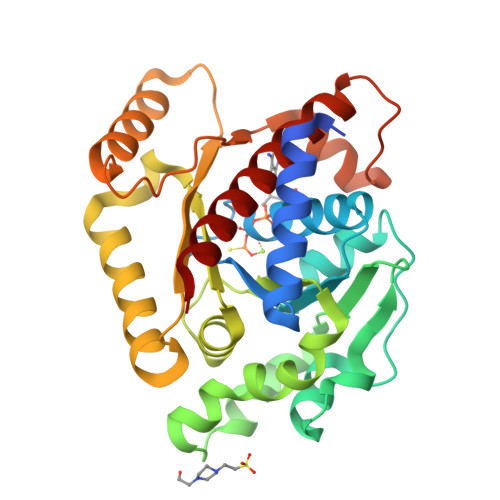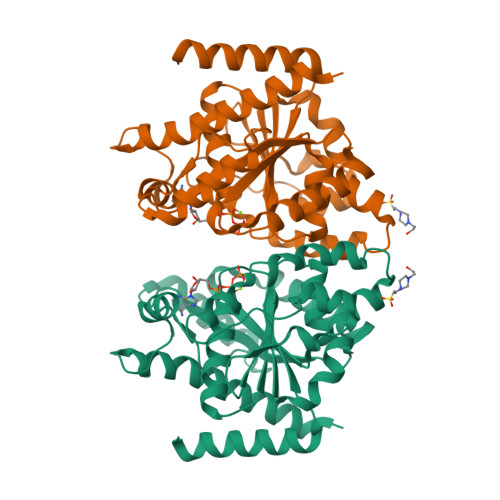Streptococcus pyogenes pSM19035 requires dynamic assembly of ATP-bound ParA and ParB on parS DNA during plasmid segregation.
Pratto, F., Cicek, A., Weihofen, W.A., Lurz, R., Saenger, W., Alonso, J.C.(2008) Nucleic Acids Res 36: 3676-3689
- PubMed: 18477635
- DOI: https://doi.org/10.1093/nar/gkn170
- Primary Citation of Related Structures:
2OZE - PubMed Abstract:
The accurate partitioning of Firmicute plasmid pSM19035 at cell division depends on ATP binding and hydrolysis by homodimeric ATPase delta(2) (ParA) and binding of omega(2) (ParB) to its cognate parS DNA. The 1.83 A resolution crystal structure of delta(2) in a complex with non-hydrolyzable ATPgammaS reveals a unique ParA dimer assembly that permits nucleotide exchange without requiring dissociation into monomers. In vitro, delta(2) had minimal ATPase activity in the absence of omega(2) and parS DNA. However, stoichiometric amounts of omega(2) and parS DNA stimulated the delta(2) ATPase activity and mediated plasmid pairing, whereas at high (4:1) omega(2) : delta(2) ratios, stimulation of the ATPase activity was reduced and delta(2) polymerized onto DNA. Stimulation of the delta(2) ATPase activity and its polymerization on DNA required ability of omega(2) to bind parS DNA and its N-terminus. In vivo experiments showed that delta(2) alone associated with the nucleoid, and in the presence of omega(2) and parS DNA, delta(2) oscillated between the nucleoid and the cell poles and formed spiral-like structures. Our studies indicate that the molar omega(2) : delta(2) ratio regulates the polymerization properties of (delta*ATP*Mg(2+))(2) on and depolymerization from parS DNA, thereby controlling the temporal and spatial segregation of pSM19035 before cell division.
Organizational Affiliation:
Department of Microbial Biotechnology, National Centre of Biotechnology, CSIC, 28049 Madrid, Spain.



















